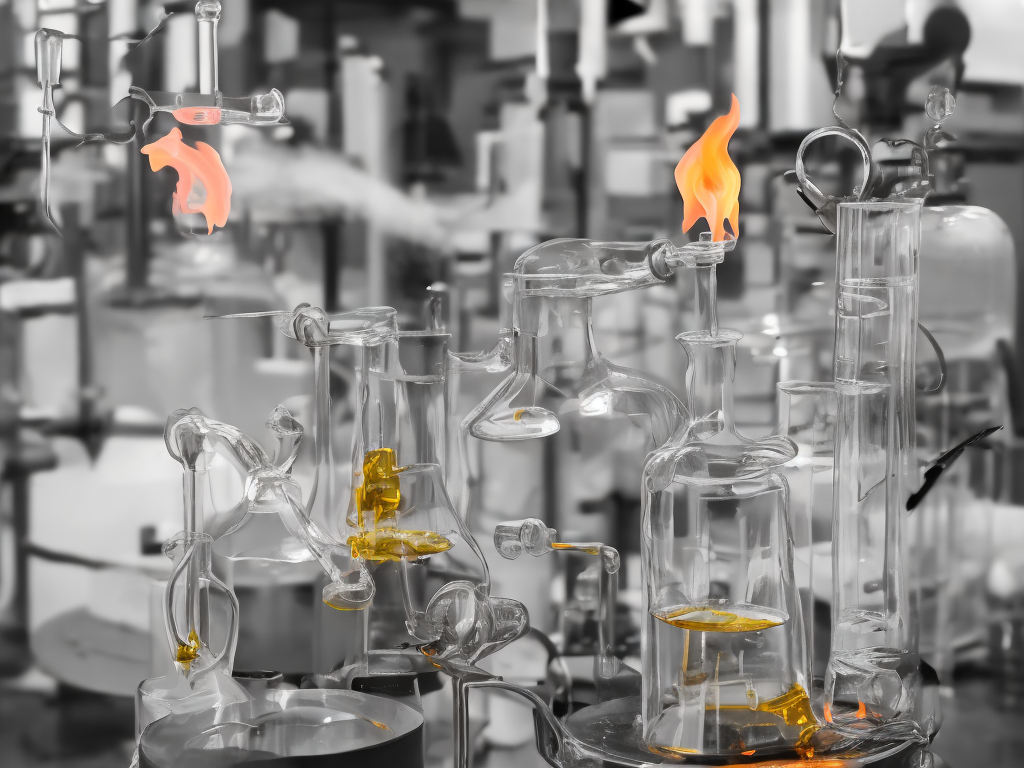
Benzoic acid is a white, crystalline solid that melts at around 121-123°C. It is commonly used in the food industry as a preservative. However, to ensure that the benzoic acid being used is pure, it is important to determine its melting point. The melting point determination process involves the use of a Melting Point Apparatus and careful observation. In this article, we will describe how to determine the melting point of benzoic acid and discuss factors that can affect the melting point.
Materials Required:
- Benzoic acid sample
- Melting Point Apparatus (MPA)
- Glass capillary tubes
- Mortar and pestle
- Safety glasses/goggles
- Heat-resistant gloves
Steps for Determining the Melting Point of Benzoic Acid:
Step 1: Grinding the Sample:
Before measuring the melting point of benzoic acid, it is essential to get a fine powder of the sample. Take a small amount of benzoic acid and grind it using a mortar and pestle until a fine powder is formed. This step is crucial to ensure the sample is homogenous.
Step 2: Filling the Capillary Tube:
Once the sample is ground, the next step is to fill a glass capillary tube with it. Take one of the capillary tubes and insert the open-end into the sample powder. Slightly tap the bottom end of the capillary tube so that the powder settles inside the tube. Insert it carefully, making sure not to disturb the powder or get any air bubbles trapped inside.
Step 3: Mounting The Capillary Tube On The Melting Point Apparatus :
Take the Melting Point Apparatus (MPA) and set the heating block temperature to 20°C below the expected melting point of the sample. For benzoic acid, it is 100-110°C. Once the heating block has reached the desired temperature, mount the capillary tube containing the sample on the heating block. Make sure that the heating block and any other parts of the apparatus are clean and in good condition to avoid contamination.
Step 4: Heating the Benzoic Acid:
Once the capillary tube is set on the heating block, the melting process starts. The heating block temperature needs to increase gradually until the sample melts. Observe the temperature display, along with the capillary tube, and record the temperature at which the sample melts. The first observable sign of melting will be the appearance of the sample turning translucent or the appearance of a small droplet of liquid on top of the powder. Once the sample is seen to be completely melted, record the temperature displayed on the MPA. Note that the actual melting temperature may vary slightly from the expected melting temperature.
Factors Affecting the Melting Point of Benzoic Acid:
The melting point of benzoic acid can vary based on the purity of the sample, the rate of heating, and the presence of any impurities in the sample.
- Purity: The melting point of benzoic acid is one of the best indicators of the purity of any given sample. The purer the sample, the sharper the melting point will be, and the narrower the range of temperatures observed.
- Heating rate: The melting point of benzoic acid depends on the heating rate, which can vary based on heating block temperature and the rate at which the temperature increases. If the heating rate is too slow, the melting process will take longer, and as a result, the melting temperature may be lower than expected. Conversely, if the heating rate is too fast, the melting temperature may be higher than expected.
- Presence of impurities: The presence of impurities in a sample can affect its melting point. Usually, the addition of an impurity will lower the melting point of the sample and broaden the melting range. Therefore, the melting point of the sample will appear lower and more spread out over a broad range of temperatures, and it will be more difficult to determine the true melting point.
Conclusion:
Benzoic acid is a widely used preservative in the food industry, and it is essential to test its purity before using it in food products. The melting point determination technique is an effective way to determine the purity of benzoic acid, where the sharper and more narrow the melting range, the purer the sample. By following the above steps and taking into consideration the factors that can affect the melting point, the purity of benzoic acid can be determined accurately.
 Self-Instruct
Self-Instruct